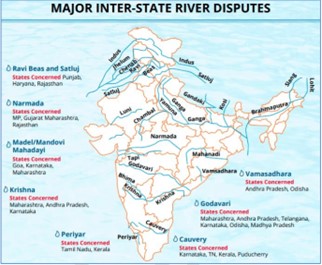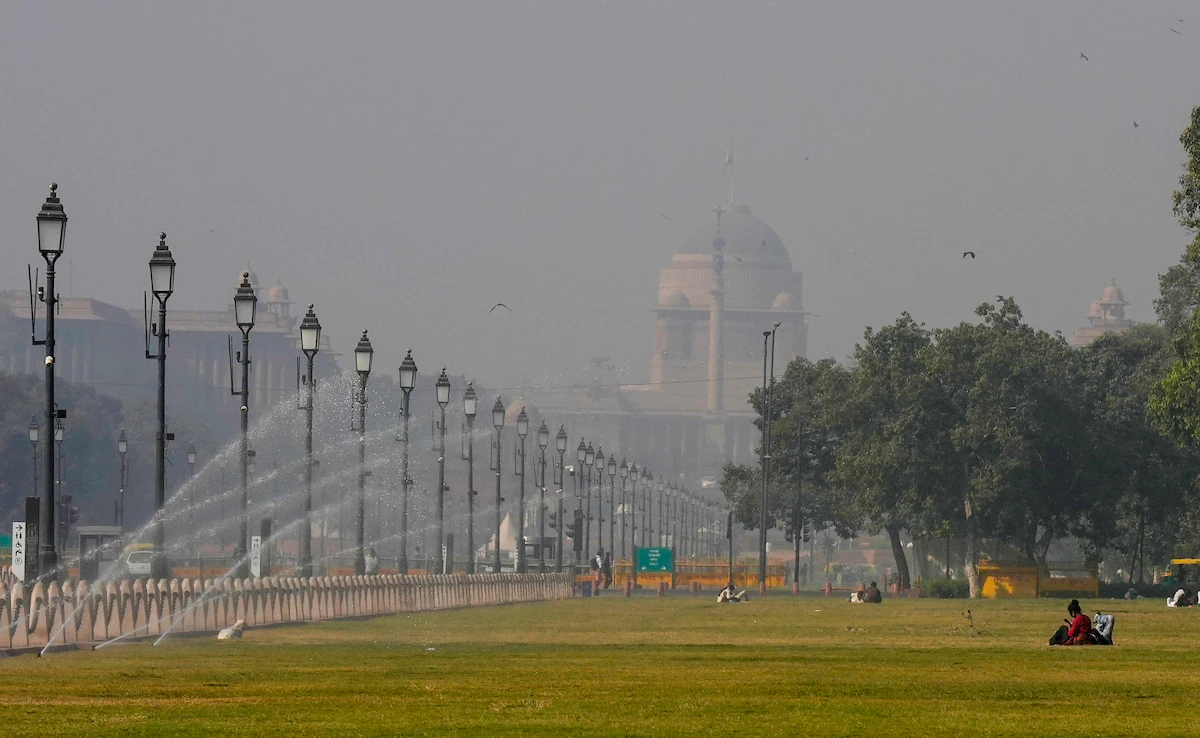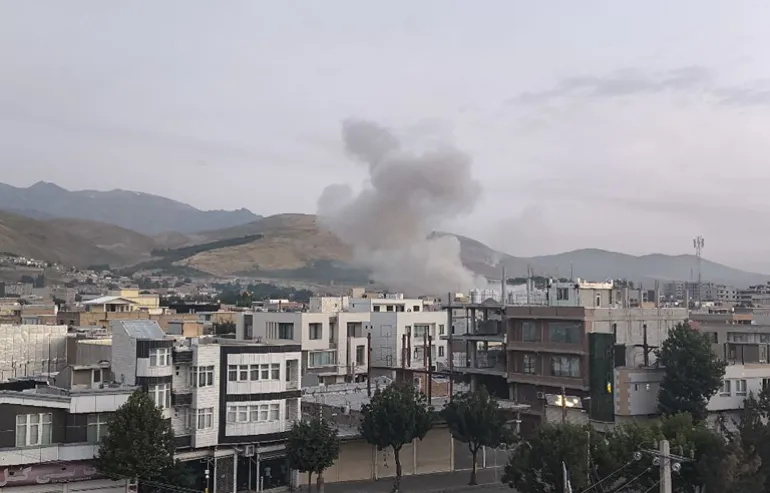- Courses
- GS Full Course 1 Year
- GS Full Course 2 Year
- GS Full Course 3 Year
- GS Full Course Till Selection
- Answer Alpha: Mains 2025 Mentorship
- MEP (Mains Enrichment Programme) Data, Facts
- Essay Target – 150+ Marks
- Online Program
- GS Recorded Course
- Polity
- Geography
- Economy
- Ancient, Medieval and Art & Culture AMAC
- Modern India, Post Independence & World History
- Environment
- Governance
- Science & Technology
- International Relations and Internal Security
- Disaster Management
- Ethics
- Current Affairs
- Indian Society and Social Issue
- NCERT- Science and Technology
- NCERT - Geography
- NCERT - Ancient History
- NCERT- World History
- CSAT
- 5 LAYERED ARJUNA Mentorship
- Public Administration Optional
- ABOUT US
- OUR TOPPERS
- TEST SERIES
- FREE STUDY MATERIAL
- VIDEOS
- CONTACT US
Inter State Water Dispute
Inter State Water Dispute

Latest News
Odisha has registered its complaint to the Ministry of Jal Shakti under the Inter-State River Water Disputes (ISRWD) Act 1956 against Chhattisgarh because it misleads the Mahanadi Water Disputes Tribunal (MWDT) by releasing water in the Mahanadi River in the Non-Monsoon Season.
- The MWDT was formed in March 2018. The tribunal will submit its report by December 2025 to the Ministry of Jal Shakti.
- Presently. there is no inter-state agreement between Odisha and Chhattisgarh regarding the allocation of the Mahanadi basin water.
Concerns of Odisha
- Chhattisgarh has opened 20 gates at Kalma Barrage through which 1.000-1,500cusec of water is flowing into Mahanadi’s low catchment area during non-monsoon season.
- Chhattisgarh does not release water during non-monsoon seasons which results in the non-availability of water in the lower catchment of Mahanadi.
- Rabi crops are being affected and it is also aggravating the drinking problem in Odisha.
- However, without any intimation this time Chhattisgarh has released water that raised concerns over its management of Mahanadi River water. Without any intimation to Odisha, Chhattisgarh opened the gates that led to the flood in the upper catchment during monsoon.
Crucial Information about Inter-State River Disputes in India
Background
There are many contentious issues in Indian federalism in current scenario and Inter-State River Water Disputes is one of them.
- Latest examples of Inter-Water Disputes are the Krishna Water Dispute, Cauvery Water Dispute, and the Satluj Yamuna Link Canal.
- There are many Inter-State Water Disputes Tribunals that have been constituted so far, but they had their own problems.
Constitutional Provisions:
- Entry 17 of the State List of the Indian Constitution: It deals with water i.e., water supply, irrigation, canal, drainage, embankments, water storage, and hydropower.
- Entry 56 of the Union List of the Indian Constitution: It empowers the Union Government for the regulation and development of inter-state rivers and river valleys to the extent declared by Parliament to be expedient in the public interest.
- According to Article 262: It enunciates the following provisions in case of disputes relating to waters:
- Parliament may by law provide for the adjudication of any dispute or complaint with respect to the use, distribution, or control of the waters of, or in, any inter-State River or river valley.
- Parliament may, by law, provide that neither the Supreme Court nor any other court shall exercise jurisdiction in respect of any such dispute or complaint as mentioned above.
The Mechanism for Inter-State River Water Disputes Resolution
- As per Article 262, the Parliament has enacted the following:
- River Board Act, 1956: This act empowered the Government of India to establish Boards for Interstate Rivers and river valleys in consultation with State Governments. To date, no river board has been created.
- Inter-State Water Dispute Act, 1956: In case, if a particular state or states approaches the Centre for the constitution of the tribunal, the Central Government should try to resolve the matter by consultation among the aggrieved states. In case, if it does not work, then it may constitute the tribunal.
Note: Supreme Court shall not question the Award or formula given by the tribunal, but it can question the working of the tribunal.
- The Inter-State Water Dispute Act, 1956 was amended in 2002. Now, it includes to include the major recommendations of the Sarkaria Commission.
- The amendments mandated a one-year time frame to set up the water disputes tribunal and also a 3-year time frame to give a decision.
|
Tribunal |
Year of Formation |
States Involved |
Current Status |
Awards |
|
Krishna Water Disputes Tribunal II |
2004 |
Andhra Pradesh, Maharashtra, Telangana, Karnataka |
Tribunal Term Extended |
Award given in 2013. Some Matters are subjudice |
|
Mahanadi Water Disputes Tribunal |
2018 |
Chhattisgarh and Odisha |
Tribunal Exists |
Matter under adjudication |
|
Mahadayi Water Disputes Tribunal |
2010 |
Karnataka, Goa and Maharashtra |
Tribunal Exists |
Awards given 2018. Some matters are pending |
|
Ravi and Beas Water Tribunal |
1986 |
Rajasthan, Haryana and Punjab |
Tribunal term extended |
Matter Subjudice |
|
VamsadharaWater Disputes Tribunal |
2010 |
Odisha and Andhra Pradesh |
Tribunal dissolved 2022 |
Yet to be published |
Issues with Interstate Water Dispute Tribunals
- Protracted proceedings and extreme delays in dispute resolution: Water disputes such as the Godavari and Cauvery disputes in India have not been resolved due to extreme delays.
- Opacity: Opacity in the institutional framework and guidelines that define the proceedings and ensuring compliance is one of the biggest issues that affect the dispute resolution mechanism of Interstate Water Disputes Tribunals.
- Composition of the tribunal: It is not multidisciplinary and it consists of persons only from the judiciary
- Absence of water data: The absence of water data that is acceptable to all parties currently makes it difficult to even set up a baseline for adjudication.
- The growing nexus between water and politics: Politics plays a very crucial role in interstate water dispute resolution. The growing nexus between water and politics has transformed the disputes into turfs of vote bank politics. This politicization has led to increasing defiance by states, extended litigations, and subversion of resolution mechanisms.
Measures that can be taken to Resolve Water Disputes:
- Bring inter-state water disputes under interstate council: To bring inter-state water disputes under the interstate council constructed by the president under Article 263 is the need of the hour and attention should be paid on consensus-based decision-making.
- Efficient use of water: States must be motivated for efficient use of water in every domain. In addition, attention should be paid to water harvesting and water recharging to reduce the demand on river water and in situ water sources.
- Single water management agency: A single water management agency should be created for both ground and surface water on a scientific basis. It should also be responsible for technical advice on the union, river basin, state, and district levels for water conservation and water management.




